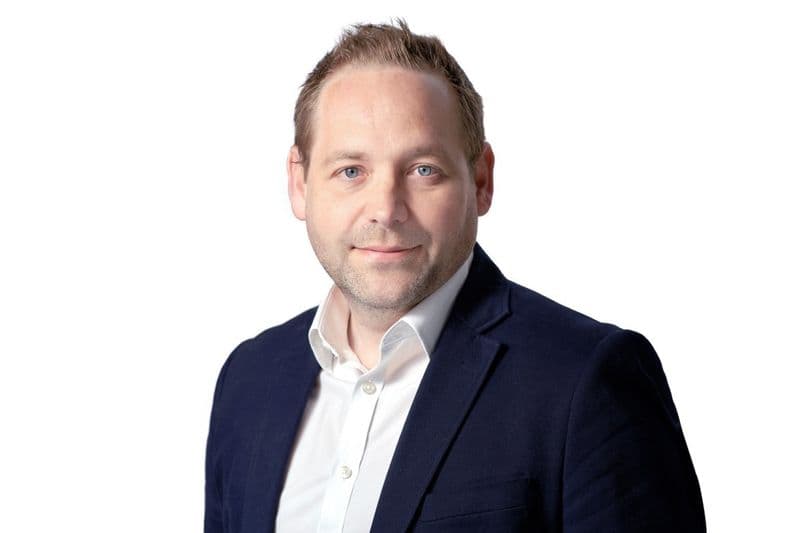
By David Vanek, CEO and co-founder of Anorak

David Vanek, CEO and co-founder of Anorak
Price comparison websites were once innovators in the insurance space. In the 90s and 00s UK shoppers used these services to save hundreds of pounds and better understand what policies were available to them.
This technology stopped innovating long ago. As other financial providers adopt the kinds of hyper-personalised services their customers expect, PCWs are stuck in a rut: recommending the cheapest option to buyers as opposed to ones which best cater to the needs and requirements of the buyer.
According to our data, at least 55% of people in the UK are uncertain as to whether they need life insurance or not and it’s no surprise, these products are notoriously hard to understand. Not only this, but protection policies, like life insurance, critical illness cover and income protection are a huge commitment in terms of the sizable timeframe these policies typically cover, and how important they are in your time of need.
Once a friend to the customer, price comparison websites need to keep up with the times and focus on personalising their services to help customers better understand their financial liabilities, and to ensure more people in the UK are comprehensively protected.
Right here, right now. Keeping up with new customer culture.
Technology, specifically continuous access to a mobile phone and the Internet, has changed everything and allowed for constant access to information about financial products and services. It can be easy to feel overwhelmed with information, especially when faced with highly complex products like life insurance or income protection. Combine this with a personal reluctance to think about their own financial liability or death, users are more likely to insure their phones, laptops and tablets, then they are their own lives. In fact, the average customer spends just 49 minutes looking into life insurance products in total.
As life insurance products see a spike in demand following the financial and emotional toll of the pandemic, price comparison websites adopting personalisation technology could be the key to ensuring more of the UK is better financially safeguarded in these uncertain times, by providing readily available access to the right information.
Perpetuating the advice gap through a lack-lustre service.
Access to a financial advisor was always seen as a service available to the affluent and over the pandemic this “advice gap” has widened further, with people unable to access information and advice from traditional services such as bank branches which would offer face-to-face support. Alarmingly, our research shows that 50% of all UK mortgages have no protection insurance in place what-so-ever, leaving 8.5 million breadwinners unprotected, with those who have less access to financial information more likely to fall into this category of risk.
There is an opportunity for price comparison websites to narrow this advice gap, by providing access to financial information which is tailored to the individual, as opposed to pushing the latest deals or “rewarding” the customer for returning to their site. Some have started to adopt integrated human and digital expertise to cater to the “complex needs” of customers seeking protection products, with Anorak doing so in the life insurance space in the UK.
Digital tools can help support financial advisers by streamlining the plethora of options available to customers today, including digital only providers or challenger banks. More services adopting these kinds of personalisation tools also democratises access to tailored financial information, making their services work smarter, not harder, for the benefit of their users.
Financial education through personalisation.
Younger generations are gravitating towards financial services which provide the best user experience and value, as opposed to the cheapest option available to them. Millennials on the whole harbor distrust towards large financial institutions, preferring to go it alone with the help of personalised digital tools like chatbots, and relying on machine intelligence, finding these tools “cool” instead of “creepy”, as it helps them access the right products and services for them.
The question therefore becomes whose responsibility is it to ensure these customers have the right policies in place for their needs? There’s a risk that a PCW service could push a product that simply doesn’t cater to an individual’s needs, leading to a 25-year commitment that doesn’t protect the buyer in the right way, and leaves them at risk if anything should happen. Comparison tools have a responsibility to ensure their customers have the right information on hand for them, which means personalisation is an imperative. In an ideal world, the combination of digital and human expertise would help buyers find the right kind of advice, with add-ons and tools available to PCWs should they want to put the interest of their users first.
Putting the customer first and the technology second.
The future of the insurance market will continue to be disrupted by technology like smart data and open banking, so PCWs face a challenge: to evolve quickly to keep up with complex consumer expectations, whilst competing with younger, more digitally agile challenger providers.
PCW’s need to understand the new consumer relationship is no longer simply transactional. Those who cotton on and adapt will come out on-top. By understanding how to use personalisation technology intelligently and responsibly, PCWs can provide a meaningful service for their customers and become a trusted adviser. I believe that the future of insurance is one where everyone knows exactly what they’re buying and why. It’s time to put the customer first and protect people’s finances in the right way.


